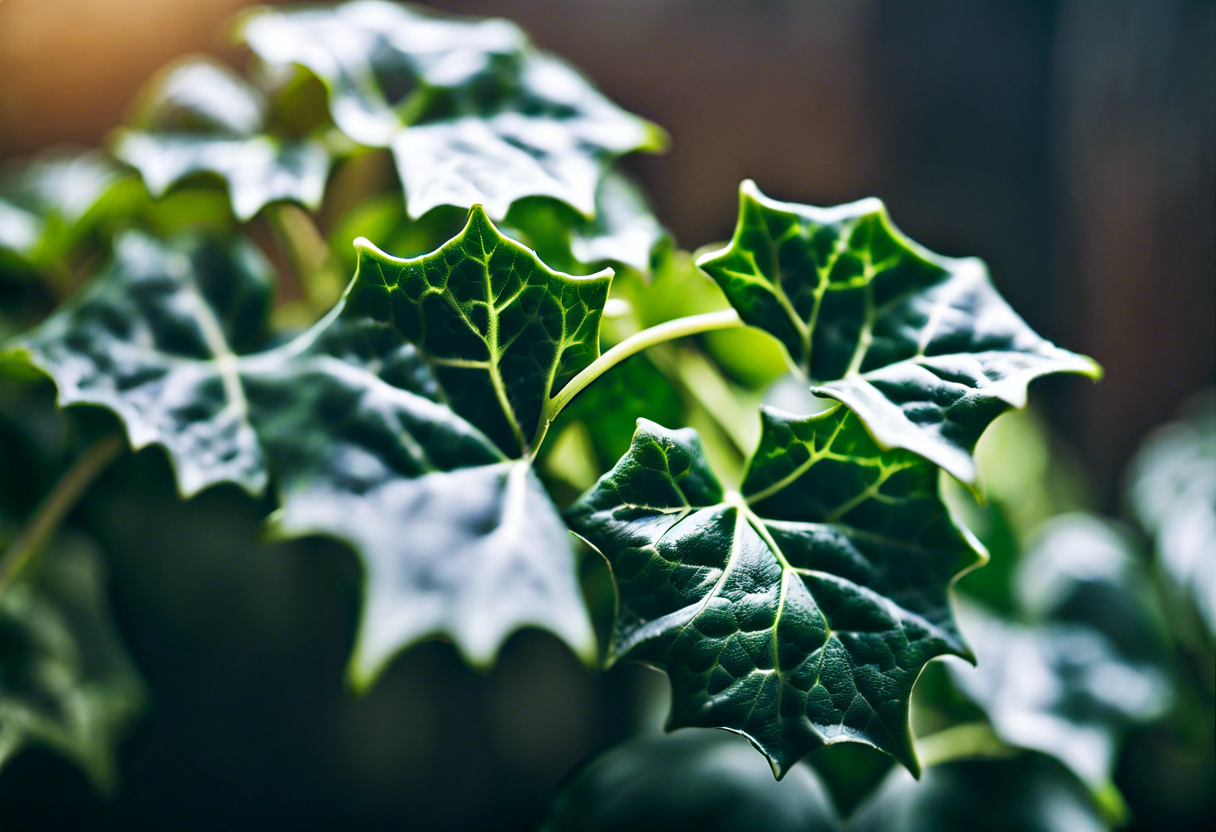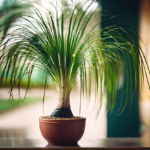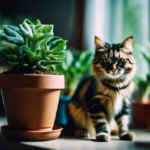English Ivy (Hedera helix) Care Requirements
When it comes to caring for English Ivy (Hedera helix), understanding its specific requirements is essential for ensuring its optimal growth and health. This popular evergreen vine is known for its beauty and versatility, making it a favorite choice among gardeners and homeowners alike. Below are the key care requirements to keep in mind when cultivating English Ivy.
1. Watering and Soil Conditions: English Ivy thrives in well-draining soil that is consistently moist but not waterlogged. It is important to water the plant regularly, especially during dry spells or hot summer months. However, overwatering should be avoided to prevent root rot. A good practice is to let the top inch of soil dry out before watering again. Adding organic matter to the soil can improve its moisture retention capabilities.
2. Light and Temperature Needs: English Ivy prefers moderate to bright indirect light, although it can also tolerate low light conditions. It is important to protect the plant from harsh, direct sunlight as it can scorch the leaves. When it comes to temperature, English Ivy thrives in cool to average room temperatures ranging between 50°F to 70°F (10°C to 21°C). It is best to avoid exposing the plant to extreme temperature fluctuations.
3. Pruning and Training: Proper pruning and training are necessary to keep English Ivy looking neat and well-maintained. Regularly trimming back any leggy or unruly growth helps encourage a fuller and more compact plant. You can also train English Ivy to climb or trail along walls, trellises, or baskets by gently guiding and securing the vines. Pruning can be done throughout the year, but it is generally recommended to do it during the spring season.
4. Pests and Diseases: English Ivy is generally resistant to most pests and diseases. However, it can occasionally be affected by spider mites, aphids, or scale insects. Regularly inspecting the plant for any signs of pest infestation and promptly addressing it with organic insecticidal soap or horticultural oil is crucial for preventing the spread of pests. Additionally, ensuring proper air circulation around the plant and avoiding overwatering can help prevent fungal diseases such as leaf spot or root rot.
Providing the right care for English Ivy (Hedera helix) is crucial for its well-being. By following these care requirements, including proper watering and soil conditions, providing adequate light and temperature, pruning and training the plant, and preventing pests and diseases, you can ensure that your English Ivy thrives and adds beauty to your indoor or outdoor space.
Best Practices for Watering and Soil Conditions for English Ivy
Proper watering and soil conditions are crucial for the health and vitality of English Ivy (Hedera helix). This popular evergreen vine is renowned for its ability to adapt to various environments, but it still requires specific care to ensure optimal growth and development.
When it comes to watering, English Ivy prefers moist soil but not excessive waterlogging. It is important to maintain a balance to prevent root rot and other water-related issues. To achieve this, you should water the plant thoroughly, allowing the water to reach the root system. However, avoid overwatering, which can result in stagnant water and suffocate the roots.
In terms of frequency, water your English Ivy deeply once a week during the growing season, and reduce watering during colder months to prevent waterlogged soil. Regularly check the top inch of the soil – if it feels dry, it’s time to water. Additionally, monitor the drainage capacity of the pot or planting area to avoid water accumulation.
The soil conditions also play a significant role in the success of English Ivy care. The plant thrives in well-draining soil that is rich in organic matter. A high-quality potting mix with good drainage, such as a combination of peat moss, perlite, and vermiculite, is ideal for container-grown English Ivy. In garden beds, amend the soil with compost or well-rotted manure to improve soil structure and fertility.
Maintaining proper soil pH is essential for English Ivy’s nutrient uptake. Ideally, the pH level should be slightly acidic to neutral, ranging from 6.0 to 7.0. Regularly test the soil’s pH using a testing kit, and adjust if necessary by adding sulfur to lower the pH or lime to raise it.
To ensure healthy growth, provide adequate nutrients to the English Ivy. Use a balanced, slow-release fertilizer formulated specifically for indoor or outdoor plants. Follow the manufacturer’s instructions regarding dosage and frequency. Avoid excessive fertilization, as it can lead to rapid, weak growth and make the plant susceptible to pests and diseases.
Remember to regularly inspect your English Ivy for any signs of stress, such as wilting or yellowing leaves. Adjust watering and soil conditions accordingly to address any issues. By following these best practices, you can create an optimal environment for your English Ivy to thrive and enjoy its vibrant foliage year-round.
Light and Temperature Needs of English Ivy for Optimal Growth
English Ivy (Hedera helix) is a resilient and versatile plant that can thrive in various light and temperature conditions. Understanding its light and temperature needs is crucial for providing optimal care and ensuring healthy growth. Here are some essential guidelines to help you create the ideal environment for your English Ivy:
Light Requirements:
English Ivy can tolerate a wide range of light conditions, making it suitable for both indoor and outdoor cultivation. However, it prefers bright but indirect light for optimal growth. When grown indoors, place your ivy near a north or east-facing window where it can receive bright but filtered sunlight. Avoid exposing it to direct sunlight, as it can scorch the leaves and cause damage.
If you choose to grow English Ivy outdoors, select a location that offers partial shade or dappled sunlight. Too much direct sunlight can result in leaf burn, while insufficient light may cause the plant to become leggy and pale. Finding the right balance is essential to maintain the health and vigor of your ivy.
Temperature Requirements:
English Ivy is adaptable to a variety of temperatures, including both cooler and warmer conditions. Ideally, it thrives in temperatures ranging between 50°F (10°C) and 70°F (21°C). However, it can tolerate colder temperatures down to around 45°F (7°C) and warmer temperatures up to approximately 80°F (27°C).
During the winter months, when the temperature drops, it is best to keep your ivy away from cold drafts. Avoid placing it near windows or doors that may let in cold air. Additionally, ensure that the plant is not exposed to extreme heat sources such as heating vents or radiators, as this can cause the leaves to dry out and lead to overall stress on the plant.
By providing the right light and temperature conditions, you can encourage robust growth and vibrant foliage in your English Ivy. Remember to monitor your plant closely, as individual variations in light and temperature needs may occur depending on specific cultivars or environmental factors. Regularly assess your ivy’s health and adjust its care accordingly to ensure its ongoing well-being.
These tips into your English Ivy care routine will help create a nurturing environment that allows your ivy to flourish. Remember to maintain a balance between light and temperature, and continuously observe your plant to offer the best possible conditions for its growth. With proper care, your English Ivy will reward you with lush and abundant foliage, adding beauty and freshness to any space.
English Ivy (Hedera helix) Pruning and Training Guide
English Ivy (Hedera helix) is a versatile and fast-growing vine that can add a touch of elegance to any garden or indoor space. Proper pruning and training are essential to maintain its growth and appearance. In this guide, we will explore the best practices for pruning and training English Ivy.
To start, it is important to note that English Ivy can be an invasive species if left unchecked. Regular pruning will help control its growth and prevent it from overtaking other plants or structures. The best time to prune English Ivy is during the spring or early summer when new growth is most active.
When pruning English Ivy, begin by removing any dead, damaged, or diseased leaves and branches. This will not only improve the plant’s overall appearance but will also promote the growth of new foliage. Be sure to use clean and sharp pruning shears to make clean cuts and minimize the risk of spreading diseases.
English Ivy can be trained to grow in various ways, depending on your preferences and the space available. One common method is to train it as a climber on a trellis or wire frame. To do this, gently weave the stems through the trellis or wire and secure them in place using garden twine. Regularly check the growth and adjust the training as needed to ensure proper coverage.
Another popular way to train English Ivy is as a ground cover. Simply plant the ivy in the desired area and guide the vines to cover the ground evenly. Regular trimming will help maintain the desired thickness and prevent it from spreading beyond its designated area.
It is important to note that English Ivy can also be trained as a topiary or espalier, creating unique and artistic shapes. This requires regular pruning and training to maintain the desired form. Be patient and allow the ivy to grow for some time before attempting intricate designs.
When working with English Ivy, wear gloves and protective clothing, as the sap can cause skin irritation for some individuals. Additionally, be cautious when handling the plant, as it may contain allergenic compounds that can cause allergic reactions.
Proper pruning and training are essential for maintaining the growth and appearance of English Ivy. By following these best practices, you can ensure that your English Ivy remains healthy, contained, and a beautiful addition to your garden or indoor space.
Common Pests and Diseases Affecting English Ivy and How to Prevent Them
English Ivy (Hedera helix) is a resilient and versatile plant, but it is not immune to certain pests and diseases. Understanding the potential problems that can affect your English Ivy and knowing how to prevent or treat them is crucial to maintaining the health and vigor of your plant.
-
Aphids: These tiny insects can infest English Ivy and suck sap from its leaves, causing them to curl and turn yellow. To prevent aphids, keep your plant well-nourished and regularly inspect the leaves for any signs of infestation. If you notice aphids, you can try spraying your plant with a mild soapy water solution or use an insecticidal soap.
-
Spider mites: These minuscule pests are common in dry and warm conditions. They can cause yellowing and stippling on the leaves, along with fine webbing. To prevent spider mites, ensure your English Ivy is adequately watered and maintain a humid environment around the plant. If an infestation occurs, you can wash the leaves with water and apply a miticide if needed.
-
Scale insects: Scale insects are small, immobile pests that attach themselves to the stems and leaves of English Ivy. They can cause yellowing, wilting, and stunted growth. To prevent scale insects, inspect your plant regularly and remove any visible pests manually. You can also use horticultural oil or insecticidal soap for control.
-
Leaf spot diseases: English Ivy can be susceptible to various leaf spot diseases caused by fungi. Leaf spots appear as brown, black, or gray lesions on the leaves, often accompanied by yellowing or browning of the affected area. To prevent leaf spot diseases, avoid overhead watering and maintain good air circulation. If necessary, apply a fungicide labeled for use on English Ivy.
-
Root rot: Overwatering and poorly draining soil can lead to root rot in English Ivy. This fungal disease affects the roots and can cause wilting, yellowing, and eventual death of the plant. To prevent root rot, ensure your plant is potted in well-draining soil and water it only when the top inch of soil feels dry to the touch. Avoid letting the plant sit in standing water.
By being proactive and implementing preventive measures, you can minimize the risk of pests and diseases affecting your English Ivy. Regularly inspecting your plant, providing optimal growing conditions, and addressing any issues promptly will help keep your English Ivy healthy and beautiful for years to come.
Conclusion
English Ivy (Hedera helix) is a beautiful and versatile plant that can add a touch of elegance to any garden or indoor space. By following the care requirements outlined in this guide, you can ensure that your English Ivy thrives and remains healthy for years to come.
When it comes to watering and soil conditions, English Ivy prefers evenly moist soil but can tolerate short periods of drought. It’s important to strike a balance, as overwatering can lead to root rot, while underwatering can cause the plant to dry out. Additionally, providing well-draining soil that is rich in organic matter will promote healthy growth.
In terms of light and temperature needs, English Ivy thrives in indirect or filtered sunlight. It can tolerate low light conditions, making it a suitable choice for indoor spaces. However, it may struggle in direct sunlight, especially during hot summer months. As for temperature, English Ivy prefers moderate temperatures between 50°F to 70°F (10°C to 21°C), but can withstand colder temperatures as long as it’s not exposed to freezing conditions for extended periods.
To maintain the desired shape and size, proper pruning and training of English Ivy are essential. Regularly trimming back overgrown or leggy stems will encourage new growth and prevent the plant from becoming unruly. Trailing or climbing ivy can be trained to grow along walls or trellises, providing a green backdrop or covering unsightly areas.
While English Ivy generally has good pest and disease resistance, it can still be susceptible to certain issues. Pests such as aphids, spider mites, and scale insects may occasionally infest the plant. Regularly inspecting the foliage and treating any infestations promptly with organic insecticidal soaps or horticultural oils can help keep these pests in check. Additionally, ensuring proper air circulation and avoiding overcrowding can prevent the development of fungal diseases like powdery mildew.
English Ivy care requires attention to watering, soil conditions, light, temperature, pruning, and pest prevention. By providing the optimal care, you can enjoy the beauty of English Ivy in your garden or as an indoor plant. Whether you are a beginner or experienced gardener, English Ivy is a rewarding plant to nurture and care for. So, get ready to bring the charm of this evergreen climber into your living spaces and enjoy the lush beauty it adds to your surroundings.


